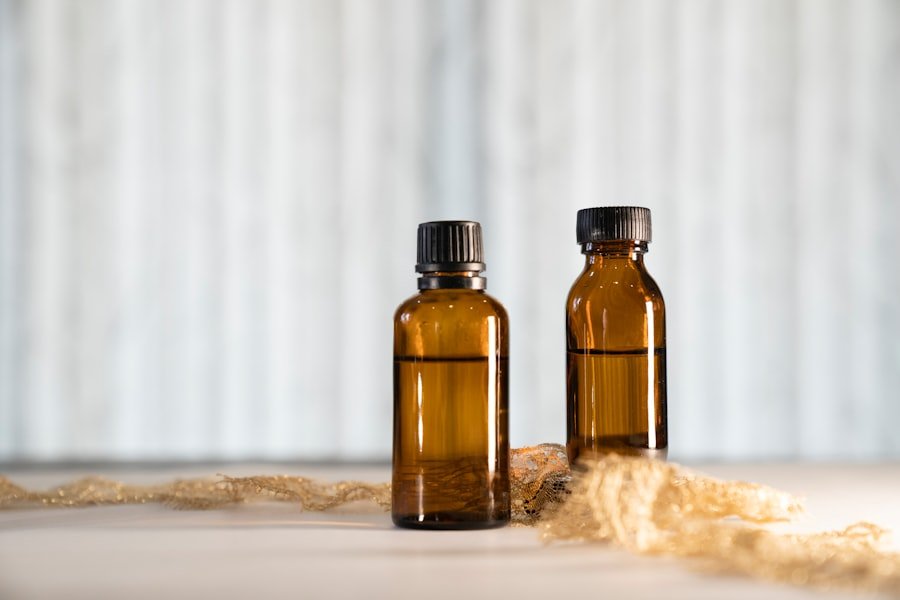Dry skin, medically known as xerosis, is a common condition that can affect individuals of all ages and backgrounds. The causes of dry skin are multifaceted, ranging from environmental factors to underlying health issues. One of the primary reasons for dry skin is the lack of moisture in the outermost layer of the skin, known as the stratum corneum.
This layer acts as a barrier, protecting the underlying tissues from external aggressors while retaining moisture. When this barrier is compromised, it can lead to dryness, flakiness, and irritation. Factors such as low humidity, excessive bathing, and harsh soaps can strip the skin of its natural oils, exacerbating the problem.
In addition to environmental influences, certain medical conditions can also contribute to dry skin. For instance, conditions like eczema and psoriasis are characterized by inflammation and a disrupted skin barrier, leading to increased transepidermal water loss. Furthermore, age plays a significant role in skin hydration; as individuals age, their skin produces less sebum, the natural oil that helps keep the skin moisturized.
Hormonal changes, particularly during menopause, can also lead to a decrease in skin hydration levels. Understanding these causes is crucial for developing effective strategies to combat dry skin.
Key Takeaways
- Dry skin can be caused by factors such as genetics, aging, weather, and harsh skincare products.
- Moisturizing plays a crucial role in hydrating the skin by locking in moisture and preventing water loss.
- Common mistakes in moisturizing include using the wrong type of moisturizer for your skin type and not applying it to damp skin.
- Choosing the right moisturizer for your skin type involves considering factors such as your skin’s hydration level, sensitivity, and oiliness.
- Hydrating from within is important for healthy skin, so make sure to drink plenty of water and eat a balanced diet.
The Role of Moisturizing in Hydrating the Skin
Moisturizing is an essential component of any skincare routine aimed at combating dry skin. The primary function of moisturizers is to enhance the skin’s hydration levels by providing a protective barrier that locks in moisture. They typically contain a combination of humectants, emollients, and occlusives, each playing a distinct role in maintaining skin hydration.
Humectants, such as glycerin and hyaluronic acid, attract water from the environment and deeper layers of the skin into the outer layer, effectively increasing moisture content. Emollients, like shea butter and fatty acids, smooth out rough patches and fill in gaps between skin cells, creating a softer texture. Moreover, occlusives such as petrolatum and beeswax form a physical barrier on the skin’s surface to prevent moisture loss.
This triad of ingredients works synergistically to ensure that the skin remains hydrated throughout the day. Regular application of moisturizers can significantly improve the appearance and texture of dry skin, reducing flakiness and irritation. It is important to apply moisturizers immediately after bathing or washing hands when the skin is still damp; this practice helps to trap moisture effectively and enhances the overall efficacy of the product.
Common Mistakes in Moisturizing

Despite the importance of moisturizing, many individuals make common mistakes that can hinder their efforts to achieve hydrated skin. One prevalent error is using products that are not suited for their specific skin type. For example, individuals with oily or acne-prone skin may opt for heavy creams that can clog pores and exacerbate breakouts.
Conversely, those with dry skin might choose lightweight lotions that do not provide adequate hydration. It is essential to select a moisturizer that aligns with one’s unique skin needs to achieve optimal results. Another frequent mistake is neglecting to apply moisturizer consistently.
Many people may apply moisturizer sporadically or only when their skin feels particularly dry.
However, maintaining a regular moisturizing routine is crucial for preventing dryness before it occurs. Additionally, some individuals may overlook the importance of reapplying moisturizer throughout the day, especially in dry or air-conditioned environments where moisture levels are low.
By establishing a consistent moisturizing regimen and being mindful of product selection, individuals can significantly improve their skin’s hydration levels.
Choosing the Right Moisturizer for Your Skin Type
Selecting the right moisturizer is paramount for effectively addressing dry skin concerns. Different skin types require different formulations to achieve optimal hydration without causing adverse reactions. For instance, individuals with oily or combination skin should look for oil-free or gel-based moisturizers that provide hydration without adding excess oil.
Ingredients like aloe vera and hyaluronic acid are excellent choices for these skin types due to their lightweight nature and ability to hydrate without clogging pores. On the other hand, those with dry or sensitive skin should opt for richer creams or ointments that contain occlusive agents to lock in moisture effectively. Ingredients such as ceramides and fatty acids are beneficial for restoring the skin barrier and preventing moisture loss.
Additionally, individuals with specific concerns such as eczema or rosacea may benefit from products formulated with soothing ingredients like colloidal oatmeal or chamomile extract. Understanding one’s skin type and specific needs is essential for making informed choices when selecting moisturizers.
The Importance of Hydrating from Within
While topical moisturizers play a crucial role in maintaining skin hydration, internal hydration is equally important for overall skin health. The body requires an adequate intake of water to function optimally, and this includes maintaining healthy skin. Dehydration can lead to a range of issues, including dry skin, dullness, and increased susceptibility to irritation.
Drinking sufficient water throughout the day helps to keep the body hydrated from within, promoting a plump and radiant complexion. In addition to water intake, consuming foods rich in omega-3 fatty acids can also support skin hydration. Foods such as fatty fish (like salmon), walnuts, and flaxseeds contain essential fatty acids that help maintain the integrity of cell membranes and support overall skin barrier function.
Antioxidant-rich fruits and vegetables can also contribute to healthy skin by combating oxidative stress and inflammation. By adopting a holistic approach that includes both external moisturizing and internal hydration through diet and water intake, individuals can achieve healthier, more hydrated skin.
External Factors that Contribute to Dry Skin

Seasonal Changes and Environmental Factors
Seasonal changes are one of the most significant contributors; during winter months, cold air combined with indoor heating can lead to decreased humidity levels, resulting in parched skin. Similarly, prolonged exposure to sun and wind can strip moisture from the skin’s surface, leading to dryness and irritation.
Lifestyle Choices and Skincare Products
Additionally, lifestyle choices such as frequent bathing or showering with hot water can further deplete the skin’s natural oils. While hot showers may feel soothing during colder months, they can disrupt the lipid barrier of the skin and lead to increased dryness over time. Furthermore, certain skincare products containing alcohol or harsh exfoliants can strip away essential moisture and irritate sensitive skin types.
Taking Proactive Measures
Being aware of these external factors allows individuals to take proactive measures in their skincare routines to mitigate dryness.
Incorporating Humectants and Emollients into Your Skincare Routine
Incorporating humectants and emollients into a skincare routine is vital for effectively combating dry skin. Humectants are substances that draw moisture from the environment into the skin; they are particularly beneficial in humid climates where they can attract additional water molecules. Common humectants include glycerin, hyaluronic acid, and urea.
These ingredients not only enhance hydration but also improve the overall texture of the skin by plumping it up. Emollients serve a different purpose; they work by filling in gaps between skin cells and providing a smoother appearance. Ingredients like shea butter, cocoa butter, and various plant oils (such as jojoba oil) are excellent emollients that help restore suppleness to dry or rough patches of skin.
When formulating a skincare routine for dry skin, it is beneficial to layer products containing both humectants and emollients for maximum effectiveness. For instance, applying a hydrating serum rich in humectants followed by a nourishing cream containing emollients can create a powerful barrier against moisture loss.
The Benefits of Regular Exfoliation
While it may seem counterintuitive to exfoliate dry skin, regular exfoliation can actually be beneficial when done correctly. Exfoliation helps remove dead skin cells from the surface layer of the epidermis, allowing for better absorption of moisturizers and other active ingredients in skincare products. When dead cells accumulate on the surface of dry skin, they can create a rough texture and hinder moisture retention.
There are two primary methods of exfoliation: physical exfoliation (using scrubs or brushes) and chemical exfoliation (using acids like alpha-hydroxy acids or beta-hydroxy acids). For those with dry or sensitive skin, gentle chemical exfoliants may be preferable as they provide effective results without causing irritation associated with physical scrubs. Regular exfoliation—typically once or twice a week—can reveal smoother, more radiant skin while enhancing overall hydration levels by allowing moisturizers to penetrate more effectively.
How to Protect Your Skin Barrier
Protecting the skin barrier is crucial for maintaining hydration levels and preventing dryness. The stratum corneum serves as the first line of defense against environmental aggressors while also playing a vital role in retaining moisture within the skin. Factors such as harsh weather conditions, over-exfoliation, and using irritating skincare products can compromise this barrier function.
To protect the skin barrier effectively, it is essential to adopt a gentle skincare routine that avoids harsh ingredients or excessive exfoliation. Opting for pH-balanced cleansers that do not strip natural oils is key; these products help maintain an optimal environment for healthy barrier function. Additionally, incorporating barrier-repairing ingredients such as ceramides and fatty acids into your routine can help restore compromised barriers over time.
By prioritizing barrier protection through thoughtful product selection and application techniques, individuals can significantly improve their overall hydration levels.
Seeking Professional Help for Persistent Dryness
For individuals experiencing persistent dryness despite diligent skincare efforts, seeking professional help may be necessary. Dermatologists are equipped with specialized knowledge regarding various dermatological conditions that could be contributing to chronic dryness.
They can provide tailored recommendations based on individual needs and may suggest prescription-strength moisturizers or treatments if necessary.
In some cases, persistent dryness may be indicative of underlying health issues such as hypothyroidism or diabetes; therefore, consulting with a healthcare professional can help identify any potential systemic causes contributing to dry skin symptoms. Additionally, dermatologists can offer advanced treatments such as laser therapy or chemical peels that may provide relief for particularly stubborn cases of dryness.
Lifestyle Changes for Healthier, Hydrated Skin
In addition to topical treatments and professional interventions, making lifestyle changes can significantly impact overall skin hydration levels. One fundamental change involves adopting a balanced diet rich in vitamins and minerals essential for healthy skin function. Foods high in antioxidants—such as berries, leafy greens, nuts—can combat oxidative stress while promoting cellular repair processes.
Moreover, incorporating regular physical activity into one’s routine not only benefits overall health but also improves circulation; enhanced blood flow delivers vital nutrients to the skin while promoting detoxification processes through sweating. Additionally, managing stress through practices like yoga or meditation can positively influence hormonal balance—stress hormones like cortisol can exacerbate dryness when left unchecked. By embracing these lifestyle changes alongside effective skincare practices tailored specifically for dry skin concerns—individuals can cultivate healthier habits that promote long-term hydration while enhancing their overall well-being.
If you are struggling with dry skin, you may also be interested in learning about skin rejuvenation treatments. Dr. Trisha Khanna offers a variety of cosmetic dermatology services, including skin rejuvenation, to help improve the overall health and appearance of your skin. To learn more about how you can revitalize your skin, check out this article.
FAQs
What causes dry skin?
Dry skin can be caused by a variety of factors, including cold or dry weather, hot showers, harsh soaps, and certain medical conditions such as eczema or psoriasis. Additionally, aging and hormonal changes can also contribute to dry skin.
Why does my skin still feel dry after moisturizing?
There are several reasons why your skin may still feel dry after moisturizing. It could be due to using the wrong type of moisturizer for your skin type, not applying enough moisturizer, or not properly exfoliating your skin before moisturizing. Additionally, environmental factors such as low humidity or exposure to harsh chemicals can also contribute to dry skin.
How can I fix dry skin even after moisturizing?
To fix dry skin even after moisturizing, consider using a thicker, more emollient moisturizer, applying moisturizer immediately after showering or washing your face to lock in moisture, and exfoliating regularly to remove dead skin cells. It’s also important to stay hydrated, use a humidifier in dry environments, and avoid harsh soaps or cleansers that can strip the skin of its natural oils. If these measures don’t improve your dry skin, consider consulting a dermatologist for further evaluation and treatment options.


